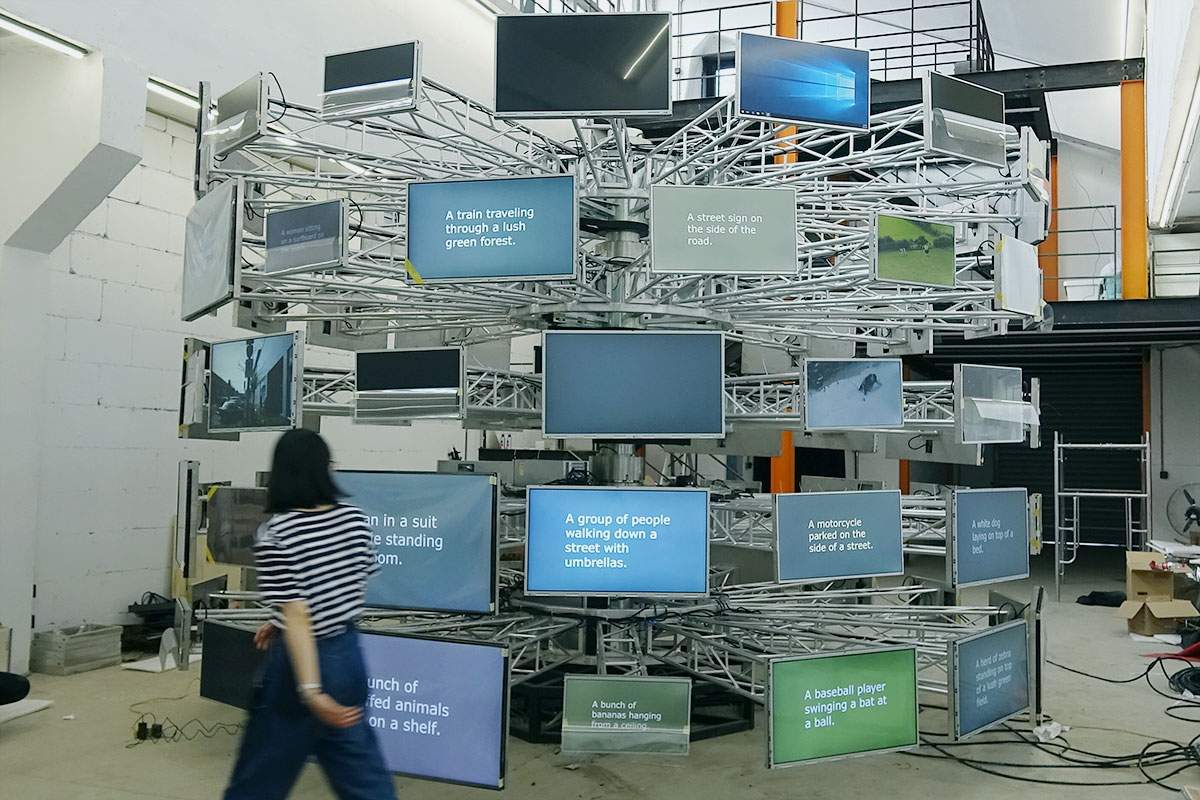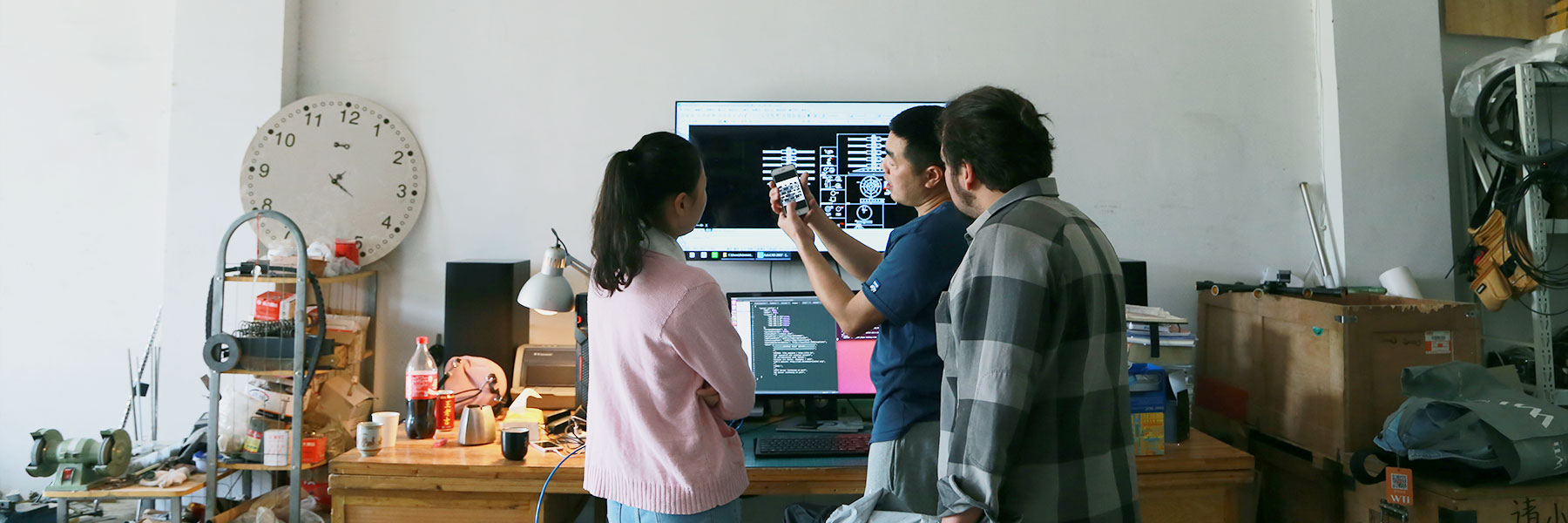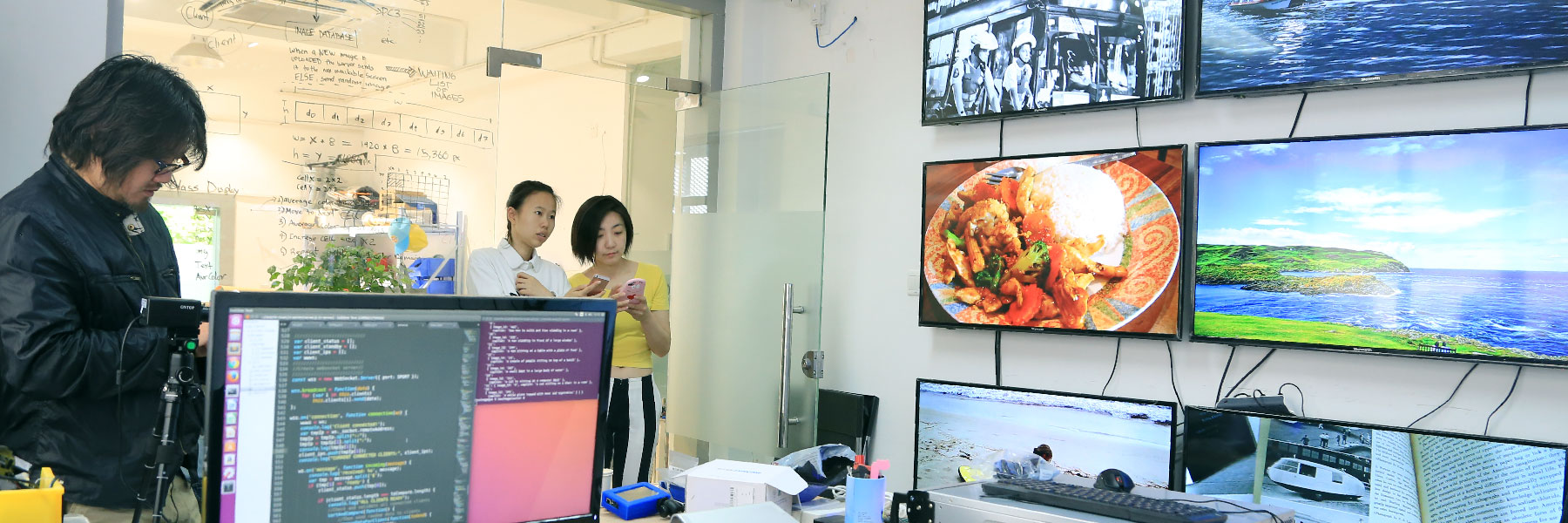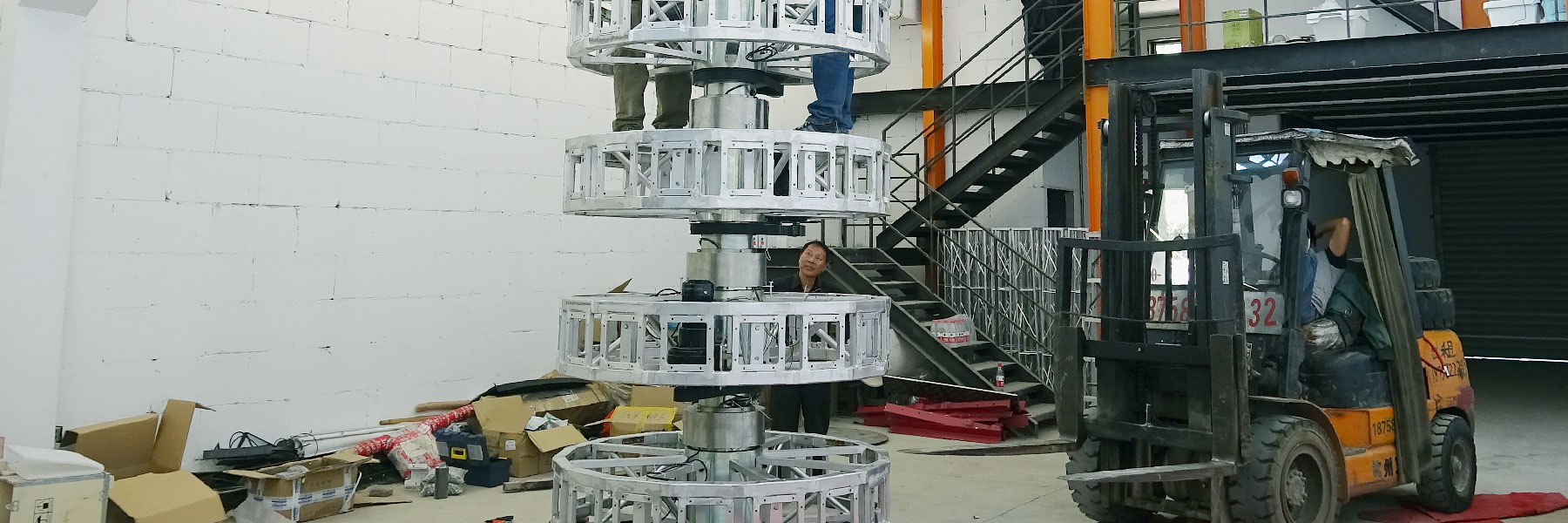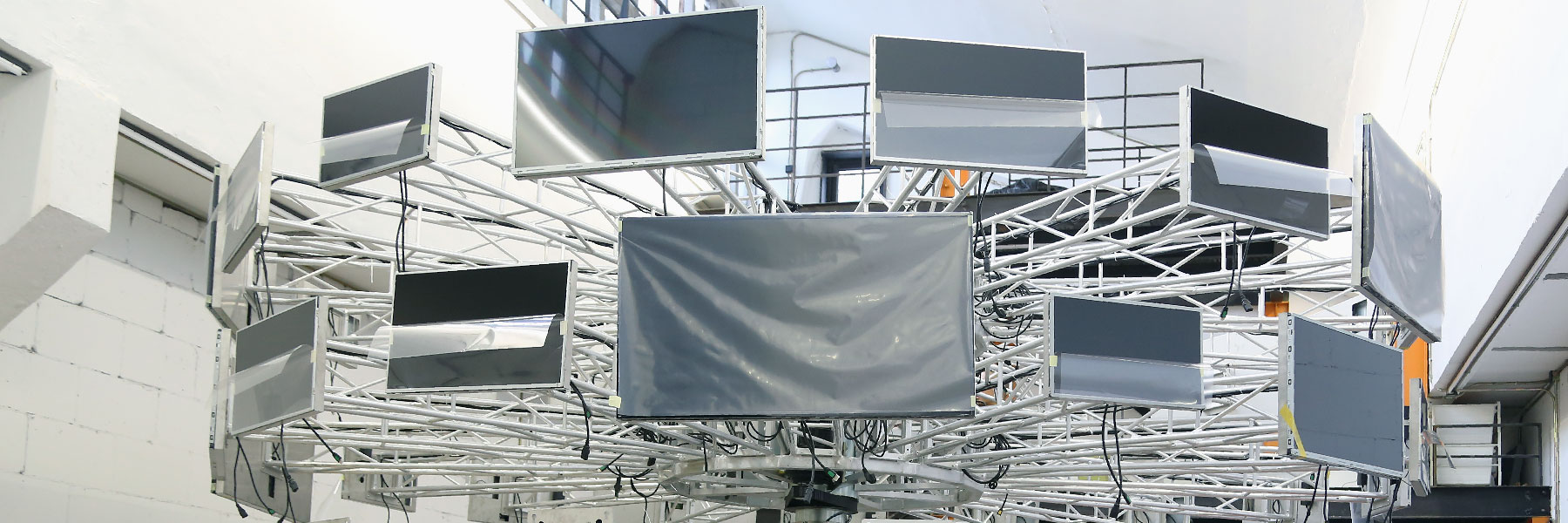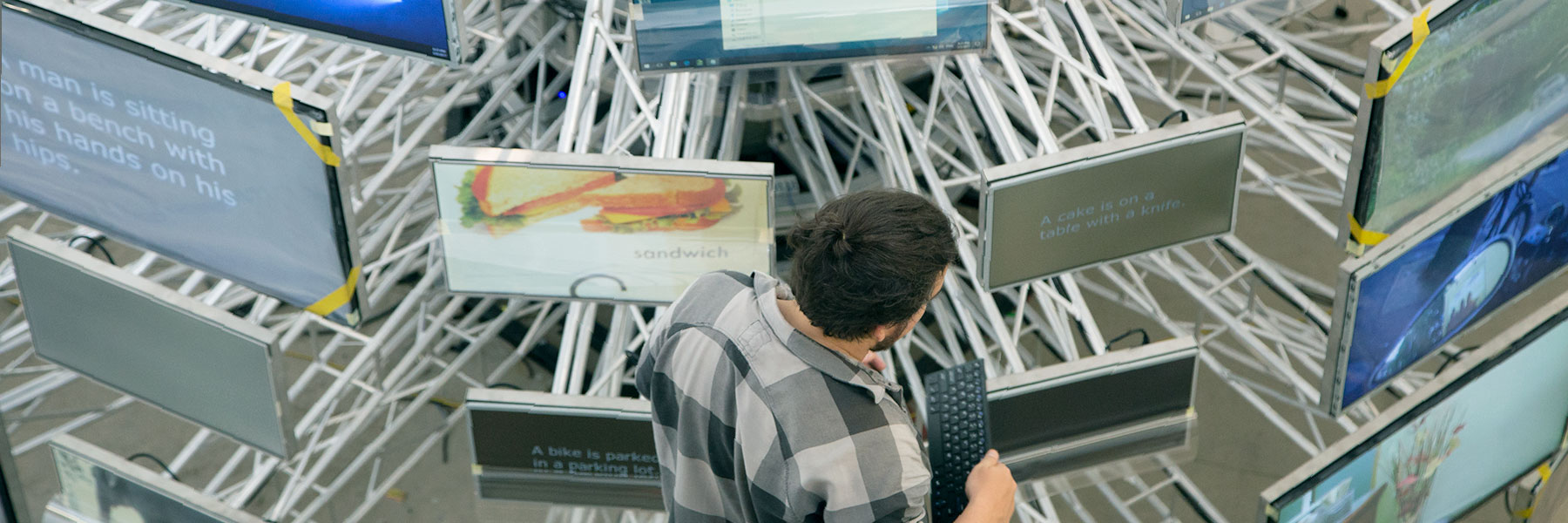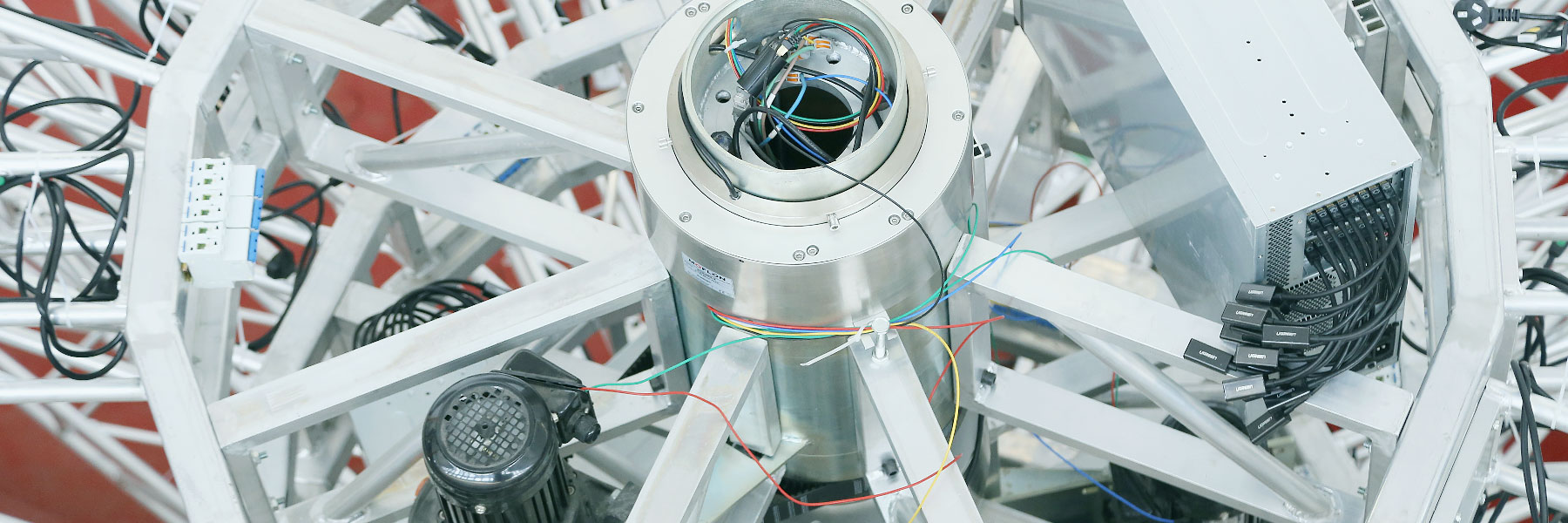80 screens, 5 computers, 1 router, 1 server, custom software, steel, cables
Dimension: 3485mm (height)×4806 mm (diameter)
As the second edition of a series of projects under the auspices of Art & Technology conceived and curated by ZHANG Ga, Rêverie Reset is commissioned by Chronus Art Center, supported by ZONHOM Cultural Development Co.,Ltd.
Rêverie Reset team:
Concept: YAN Lei
Producer: YANG Sheng Nien
Production Associate: OrangeZ
Technology Advisor: Fito Segrera
Software Programming: Fito Segrera
Programming Assistant: YAN Ji
Mechanical Structure: WANG Feng
About the Work
In his artistic practice, Yan Lei constantly inquires into the cultural relevance of the image. He applies digital techniques and decomposes photographs which eventually he paints. The artist recursively questions the relevance implicit in the act of representation, while emphasizing the superfluous nature of the painted image. One could refer to Yan Lei’s creative process as a destructive practice, one closer to conceptualism; layers of ideas superposed over visual expression, an action that reduces realistic representations into abstract monochromes.
Rêverie Reset is a system which takes Yan Lei’s practice of dissolving images into concepts to a new instance. A large scale installation which makes use of cutting edge computational systems and networking technologies in order to reaffirm the artist’s notion of the artificiality of representation and the irrelevance of the image.
80 digital displays are mounted onto a large scale rotating cylindrical structure. Each display is networked to a system programmed to constantly show images from a local database and submitted by the audience through their mobile phones. When a user enters the space, he or she is asked to connect to a WiFi network, this allows him/her to connect directly to the sculpture. Every time an image is uploaded to the system, the software will process it by calculating its average pixel color while the local artificial neural network describes the image, textually, in human like terms. After a few seconds, the new image is simultaneously shown in all screens on a three-step narrative: the original image, the average flat color, and the text describing the image. This information is all saved on the local database and used in the future by the sculpture. When no user is connected and no new image uploaded to the system, the sculpture, on its rotating layers of screens, keeps showing random images from previous users.
Resulting Exhibitions
Datumsoria: The Return of the Real
2017.9.9–2018.3.18
ZKM | Center for Art and Media (Germany)
About the artist




